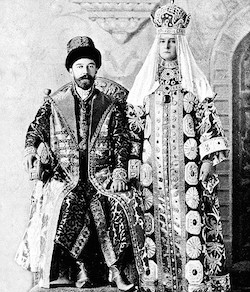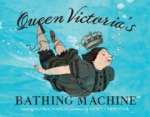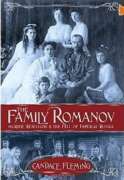by Yoo Kyung Sung, University of New Mexico, Albuquerque, NM
 In the story Queen Victoria’s Bathing Machine (Whelan, 2014), the queen loves to swim. Her swimming is not without a dilemma: how does a queen swim and still maintain “propriety?” The more she thinks that she shouldn’t swim, the more she wants to swim. In the end, her husband solves the problem. Sharing this not so public side of Queen Victoria is what makes this a truly delightful book. In the illustrations, the queen isn’t depicted with glamorous looks or in elegant dress, despite the fact that she was one of the most powerful monarchs in Europe. Instead, she looks like any ordinary middle aged woman who might regularly make a new-year resolution to lose weight.
In the story Queen Victoria’s Bathing Machine (Whelan, 2014), the queen loves to swim. Her swimming is not without a dilemma: how does a queen swim and still maintain “propriety?” The more she thinks that she shouldn’t swim, the more she wants to swim. In the end, her husband solves the problem. Sharing this not so public side of Queen Victoria is what makes this a truly delightful book. In the illustrations, the queen isn’t depicted with glamorous looks or in elegant dress, despite the fact that she was one of the most powerful monarchs in Europe. Instead, she looks like any ordinary middle aged woman who might regularly make a new-year resolution to lose weight.
What  makes this story so captivating is that, as readers, we often have a romantic vision of royal families that emanates from our early reading of fairy tales and viewing the Disneyfied versions of them on screen. While there are still a few countries that maintain royal families, it is small when compared to the number that existed in world history. In many cases, royal families were displaced violently. The story of Tsar Nicholas II, in The Family Romanov: Murder, Rebellion & the Fall of Imperial Russia by Candace Fleming (2014) is no exception. The Russian monarchy ended with their murder on July 17, 1918. The book gives us a fresh perspective on the Romanov family. The end of the Russian monarchy coincides closely with military debacles of WWI and begins the transition to the rise of communism and the brutality of Lenin and Stalin. We are all roughly familiar with Russian history, yet I suspect that we look at Russia too often through the lens of Agent 007 while discounting its imperial history.
makes this story so captivating is that, as readers, we often have a romantic vision of royal families that emanates from our early reading of fairy tales and viewing the Disneyfied versions of them on screen. While there are still a few countries that maintain royal families, it is small when compared to the number that existed in world history. In many cases, royal families were displaced violently. The story of Tsar Nicholas II, in The Family Romanov: Murder, Rebellion & the Fall of Imperial Russia by Candace Fleming (2014) is no exception. The Russian monarchy ended with their murder on July 17, 1918. The book gives us a fresh perspective on the Romanov family. The end of the Russian monarchy coincides closely with military debacles of WWI and begins the transition to the rise of communism and the brutality of Lenin and Stalin. We are all roughly familiar with Russian history, yet I suspect that we look at Russia too often through the lens of Agent 007 while discounting its imperial history.
 Learning about history through literature can be both a process and a story journey intertwined with the purposeful reiteration of what actually happened. In The Family Romanov Fleming weaves the stories of various individuals (rich, poor, victims, etc.) into a historical tapestry. The startling contrast between the opulence that defined the wealthy to the stark poverty of the peasants provides the rich background necessary to understand the tinderbox that explodes into the Russian Revolution, the rise of communism, and the establishment of the Soviet Union. The extreme disconnect between the wealthy and the poor produces combustible social stresses within the world of the Romaovs and is well described in the narrative section titled “Beyond the Palace Gates.”
Learning about history through literature can be both a process and a story journey intertwined with the purposeful reiteration of what actually happened. In The Family Romanov Fleming weaves the stories of various individuals (rich, poor, victims, etc.) into a historical tapestry. The startling contrast between the opulence that defined the wealthy to the stark poverty of the peasants provides the rich background necessary to understand the tinderbox that explodes into the Russian Revolution, the rise of communism, and the establishment of the Soviet Union. The extreme disconnect between the wealthy and the poor produces combustible social stresses within the world of the Romaovs and is well described in the narrative section titled “Beyond the Palace Gates.”
The privilege that Tsar Nicholas experienced is well described, “He was the richest monarch in the word: his family wealth was once estimated at $ 45 billion (in today’s U.S. currency). Every year he drew an income of 24 million gold rubles ($240 million today) from the state treasury, which derived most of its income from taxes and fees levied on the tsar’s subjects” (p.3). His wife, Empress Alexandra whom Queen Victoria herself raised “to be proper Englishwoman” wore, at a ball, “a gold brocade gown shimmering with the thousands of diamonds and pearls that had been sewn onto it, a costume that cost one million rubles ($10 million today). Her elaborate headdress glittered with diamonds and emeralds, and her pearl earrings were so heavy it was hard for her to hold up her head. Around her neck hung an enormous 400-carat blue sapphire.”(p.4).
Peasant life, on the other hand was a severe contrast. “Most had no furniture either. Instead, long wooden benches ran along the walls. Used for seating during the day, they were converted into beds at night. Without mattresses or pillows, peasants simply took off their coats and used them as blankets . . . Often there was little to eat but dark bread. It was a staple of their diet, and peasant housewives tried to stretch the loaves by mixing clay, ground straw, or birch bark into the flour” (p.7). “Many peasants were so poor, even the cockroaches abandoned their huts. ‘A cockroach is a natural aristocrat,’ explained one observer, ‘and requires a greater degree of comfort than can be found in the dwellings of the rural poor’” (p.7).
Ironically, the royal family romanticized the reality of peasant life. “’It was common knowledge among the nobility that the country’s fresh foods and clean air made the peasants healthier than the vain city women who sickened themselves with rich food and tortured their bodies with laces, corsets, and shoes made only for fashion, ‘ declared one nobleman” (p.6). These disparities set a tone of anger and frustration among peasants and become the situational trigger for peasant born leaders like Lenin to upend Russian society.
The book, then, focuses on the three aspects of early 1900 Russia: the romance of Tsar Nicholas II and his Empress to be Alexandra, the peasant worker strikes beginning in the first decade of the century that leads to the rise of Lenin, and the suffering endured by the peasants.
Lastly, the book chronicles the end of Romanovs, “Yurovsky began reading from the paper: ‘In light of the fact that your relatives in Europe [are] continuing their aggression against Soviet Russia [it] has been decreed that [you are] to be shot’… Yurovsky let go of the paper. As it fluttered to the floor, he jerked the Colt pistol from his pocket. ‘This!’ he said. He shot the Tsar . . . Olga and Tatiana (children), arms around each other, huddled in a corner. Bullets soon took their lives . . . The Imperial family lay still. Calmly Yurovsky checked for pulses. Then the men wrapped the bodies in sheets taken from the girls’ army cots, and carried them up the stairs to the waiting truck. That’s when someone found the body of Anastasia’s little dog” (p.239). Their bodies were not found until 1979. The discovery of the bodies was not officially announced, but rather kept as state secret until the Soviet Union fell.
There are layers of stories in this book. Some are descriptive accounts of WWI. Some are depictions of less known aspects of the Russian Revolution. Yet, there is a familiar facet to them in terms of what we know about global politics and the ideological chaos of the Cold War. There are even echoes of this in today’s “occupy Wall Street” phenomena and various confrontations around the globe over classism. Fleming chose not to sugar coat history in her narratives which are as powerful as intentionally dramatized historical fiction. Perhaps that is the power that resides within true stories!
Next week I will discuss some Russian Children’s Literature and illustrators and authors I want to introduce with stories about WWII and Russia.
Please visit wowlit.org to browse or search our growing database of books, to read one of our two on-line journals, or to learn more about our mission.
- Themes: Russia, Yoo Kyung Sung
- Descriptors: Books & Resources, Student Connections, WOW Currents
